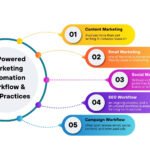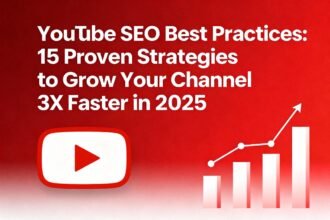Struggling to grow your business? You might be missing the basics. So, what are the 7 P’s in marketing really about?
In a world where algorithms shift overnight and consumer attention is gold dust, the fundamentals still matter. If your marketing strategy isn’t delivering real results, chances are you’re overlooking the core framework that underpins the best campaigns in every industry.
Also Read: What Are The 4 P’s of Social Marketing? The Proven Formula Behind Behavior-Change Campaigns
What Are The 7 P’s in Marketing? This question isn’t just academic—it’s practical. The answer holds the key to building a brand that connects, converts, and scales. Whether you’re launching a new product, repositioning your services, or simply trying to stand out in a saturated market, the 7 P’s—Product, Price, Place, Promotion, People, Process, and Physical Evidence—form the essential marketing mix every modern business must master.
This framework isn’t a relic from a marketing textbook—it’s a dynamic toolset for enhancing customer experience, driving business growth, and structuring high-impact strategies that actually perform in 2025’s digital-first landscape.
Let’s break it down.
What Are the 7 P’s in Marketing?
So, what are the 7 P’s in marketing, and where did they come from?
Originally introduced as the 4 P’s—Product, Price, Place, and Promotion—by E. Jerome McCarthy in the 1960s, the framework was later expanded to include People, Process, and Physical Evidence, giving us the complete 7 P’s of marketing we use today. This evolution was necessary to account for the rising importance of services, customer experience, and intangible value in modern marketing.
Today, the 7 P’s aren’t just a checklist—they’re a strategic blueprint. They help you structure your entire marketing ecosystem, from what you sell to how it’s delivered and perceived. Whether you’re a B2C fashion brand or a B2B SaaS startup, this model can be tailored to your business needs.
What Are The 7 P’s in Marketing?
Here’s a quick rundown before we dive deeper:
|
P |
Focus Area |
What It Addresses |
|
Product |
The offering |
What you’re selling and why it matters |
|
Price |
Value exchange |
What your product costs and how it’s perceived |
|
Place |
Distribution |
Where and how your product is accessed |
|
Promotion |
Communication |
How you attract and retain customers |
|
People |
Human touch |
The staff and stakeholders behind the brand |
|
Process |
Operational flow |
The systems behind the experience |
|
Physical Evidence |
Tangible cues |
The visuals and signals that build trust |
Understanding what the 7 P’s in marketing really stand for means recognizing their combined power. Each “P” influences the others—and optimizing one without the rest leads to missed opportunities.
The 7 P’s Breakdown: A Deep Dive Into Each Element
To truly answer the question, “What are the 7 P’s in marketing?”, we need to look under the hood. Each “P” plays a critical role in building a complete, customer-centric strategy. Let’s unpack them one by one.
1 Product: The Core of the Offering
When asking, “What are the 7 P’s in marketing?”, product is the non-negotiable starting point. It’s the value you’re delivering—the hero of the whole story. Whether it’s a subscription box, a software suite, or a luxury service, your product needs to solve a specific problem and meet your audience’s expectations.
Consider these elements:
- Features & benefits
- Design, quality, and usability
- Brand identity and packaging
- Lifecycle and innovation
- After-sales support and guarantees
Great products are rarely accidents. They’re intentional responses to customer needs, designed to delight, not just deliver.
2 Price: Perception Meets Profitability
Next in our breakdown of “What are the 7 P’s in marketing?” is price—a deceptively powerful lever. More than just a dollar figure, price is a signal. It speaks to your brand’s value, quality, and position in the market.
Strategic pricing includes:
- Competitive benchmarking
- Tiered or bundled offerings
- Dynamic or value-based pricing
- Promotional discounts
- Psychological pricing (e.g., $9.99 vs. $10)
Your price should reflect what your audience is willing to pay and what your business needs to thrive.
3 Place: Where Value Meets Accessibility
In the conversation around “What are the 7 P’s in marketing?”, place is often underestimated—but it’s crucial. It’s about how, where, and when your audience can access your product.
Modern distribution considerations:
- Brick-and-mortar vs. e-commerce
- DTC (Direct-to-Consumer) models
- Retail partnerships or marketplaces
- Inventory & supply chain management
- Global vs. local strategies
The goal? Be everywhere your customer already is—or at least, make it feel that way.
4 Promotion: Telling the Right Story, the Right Way
Let’s be real: your offer could be game-changing, but if no one knows about it, it’s dead in the water. Promotion—another pillar in the “What are the 7 P’s in marketing?” model—is about communicating value and generating buzz.
Channels and tactics include:
- Paid ads (Google, Meta, LinkedIn)
- Content marketing and SEO
- Influencer and affiliate marketing
- PR and events
- Email and SMS marketing
The strongest campaigns combine logic with emotion, data with storytelling.
5 People: Your Brand’s Human Engine
In the extended marketing mix, people adds a critical emotional layer to “What are the 7 P’s in marketing?” These are the humans behind the scenes—sales reps, support agents, founders—who shape your customer’s experience.
Priorities here include:
- Hiring and training
- Brand-aligned communication
- Customer support culture
- Internal feedback loops
- Empowered frontline staff
Your team is your brand. The smoother and more empathetic their interaction, the stronger your retention.
6 Process: Making the Magic Happen
Every customer touchpoint is part of a process—the sixth “P” in “What are the 7 P’s in marketing?” It’s the behind-the-scenes flow that keeps your business humming and your customers satisfied.
This includes:
- Purchase workflows
- Fulfillment and logistics
- Onboarding journeys
- Automation and CRM systems
- Troubleshooting frameworks
A clunky process will kill even the best product. An elegant one creates loyalty.
7 Physical Evidence: Trust You Can See and Feel
Last but never least in “What are the 7 P’s in marketing?” is physical evidence—all the tangible cues that support your brand promise. It’s how customers visually and emotionally validate your credibility.
Examples include:
- Store layout and ambiance
- Website UX/UI and design
- Testimonials, reviews, case studies
- Branded packaging and collateral
- Social proof and certifications
In service-based businesses, especially, physical evidence bridges the gap between intangible and believable.
Why the 7 P’s in Marketing Still Matter Today
If you’re still wondering, “What are the 7 P’s in marketing and why should I care in 2025?”, here’s the truth:
These seven pillars are more relevant now than ever—because customers are more empowered, markets are noisier, and expectations are sky-high.
The extended marketing mix gives you more than a framework—it gives you clarity in chaos. It forces you to zoom out, assess every touchpoint, and ensure nothing is left to chance.
Here’s why the 7 P’s in marketing still matter in today’s digital-first, customer-centric economy:
They Drive Strategic Consistency
Using the 7 P’s keeps your messaging, delivery, and brand promise aligned—so what you say actually matches what you do.
They Adapt Across Channels and Models
Whether you’re running a DTC skincare brand, managing an enterprise SaaS company, or launching an app, the 7 P’s flex to fit. Physical, digital, hybrid—it doesn’t matter. They travel well.
They Put the Customer Experience at the Center
From onboarding to unboxing, from social ads to service calls—the 7 P’s force you to look through the eyes of your buyer. That’s how you build trust and advocacy.
They Keep You Competitive
Markets shift. Tech evolves. Consumer behavior flips on a dime. But if you’ve nailed your product, pricing, process, and promotion, you’re always ready to adapt.
They’re the Bridge Between Strategy and Execution
Having a vision is great. But having a system to deliver it at scale? That’s game-changing. The 7 P’s give you a tactical roadmap to bring your big ideas to life.
So, when someone asks “What are the 7 P’s in marketing?”, don’t think of them as academic theory. Think of them as a marketing survival kit—one that will grow with you, evolve with your brand, and sharpen your edge in any industry.
Applying the 7 P’s: Real-World Scenarios That Make It Click
Theory’s cute. But what does it actually look like when a brand uses the 7 P’s well?
To fully grasp the power behind the question, “What are the 7 P’s in marketing?”, let’s map the framework onto three business types—a tech startup, a boutique fashion brand, and a service-based consultancy. Because versatility is the real flex.
Scenario 1: SaaS Startup – “NotionX” (Productivity App)
|
P |
Application |
|
Product |
Offers modular, customizable workflows with AI integrations |
|
Price |
Tiered pricing model: Free, Pro, and Enterprise |
|
Place |
Fully digital, distributed via app stores and direct download |
|
Promotion |
Content marketing, YouTube tutorials, and in-app referral incentives |
|
People |
Proactive customer support team and active Discord community |
|
Process |
Onboarding wizard, in-app tutorials, frictionless upgrade path |
|
Physical Evidence |
Clean UX, case studies, and glowing G2 reviews |
Result: 125% growth in paid users in 12 months—powered by alignment across all 7 P’s.
Scenario 2: Boutique Fashion Brand – “Haus Lumen”
|
P |
Application |
|
Product |
Sustainable, limited-edition streetwear |
|
Price |
Premium pricing to reflect exclusivity and eco-values |
|
Place |
Sold via Shopify store, with seasonal pop-ups in major cities |
|
Promotion |
Instagram Reels, influencer collabs, and email drops |
|
People |
Stylists and reps who double as brand storytellers |
|
Process |
Pre-order system to reduce waste, SMS shipping alerts |
|
Physical Evidence |
Branded packaging, handwritten notes, recyclable tags |
Result: Built a loyal Gen Z following and doubled pre-orders by reinforcing brand value through the 7 P’s.
Scenario 3: Digital Consultancy – “ClearPath Strategy”
|
P |
Application |
|
Product |
Custom digital strategy roadmaps for scaling SMEs |
|
Price |
Value-based pricing tied to business size and complexity |
|
Place |
Fully remote service delivery via Zoom and client portal |
|
Promotion |
LinkedIn thought leadership, webinars, and lead magnets |
|
People |
Experienced consultants with deep industry credentials |
|
Process |
Defined 6-week sprint methodology and milestone check-ins |
|
Physical Evidence |
White-labeled reports, branded Notion dashboards, client testimonials |
Result: 40% faster sales cycle and a 5x increase in referrals—thanks to a 7 P’s-led service delivery.
These aren’t unicorns. They’re proof that when you understand and apply the 7 P’s with intention, your brand becomes systemically better—across messaging, delivery, and experience.
7 P’s vs. Other Frameworks—When to Use Which
So you’ve nailed What Are The 7 P’s in Marketing?—but how does this model stack up against the other buzz‑worthy frameworks cluttering your LinkedIn feed? Here’s a quick‑fire comparison to help you pick the right tool for the right job.
|
Framework |
Core Focus |
Perfect For |
Watch‑Outs |
|
4 P’s (Product, Price, Place, Promotion) |
Tangible goods & classic retail |
Product launches, FMCG, e‑commerce basics |
Ignores service nuance, CX, and people‑centric touchpoints |
|
7 P’s (Extended Mix) |
Full customer experience incl. services |
SaaS, DTC, hospitality, any brand where human touch + process matter |
Can feel “big” if you only sell a single SKU—trim to 5‑6 P’s tactically |
|
4 C’s (Consumer, Cost, Convenience, Communication) |
Customer viewpoint & value exchange |
Persona‑driven messaging, value proposition workshops |
Less operational detail—pair with 7 P’s for execution clarity |
|
STP (Segmentation, Targeting, Positioning) |
Market analysis & strategic focus |
Entering new markets, brand repositioning, niche targeting |
Stops at strategy—needs a mix model (e.g., 7 P’s) for rollout |
|
AIDA (Attention, Interest, Desire, Action) |
Funnel‑based conversion flow |
Copywriting, landing pages, ad creatives |
Purely comms‑centric—doesn’t guide product, price, or process |
How the Pieces Fit Together
- Zoom‑out strategy → STP to define who and why.
- Customer‑first lens → 4 C’s to refine value and voice.
- Execution blueprint → 7 P’s to align everything from product to physical evidence.
- Tactical funnels → AIDA to craft scroll‑stopping creative.
In short, the 7 P’s sit at the execution powerhouse stage—turning strategic insights into a tangible, end‑to‑end customer experience. Use the other models as complementary lenses, but lean on the extended mix whenever you need to orchestrate people, process, and physical cues alongside the classic four pillars.
Conclusion: Mastering the Marketing Mix with the 7 P’s
If you’re still wondering, “What are the 7 P’s in marketing, and should I really be using them?”—here’s the truth: they’re not optional. They’re essential.
The 7 P’s give you more than just a framework—they give you a control panel. One that helps you balance strategy with execution, brand storytelling with service delivery, and customer expectations with internal processes.
Recap:
- Product: Solve real problems.
- Price: Reflect value, not just cost.
- Place: Meet your customer where they are.
- Promotion: Shout your story, smartly.
- People: Empower those behind the scenes.
- Process: Make interactions frictionless.
- Physical Evidence: Signal trust and credibility.
Whether you’re building from scratch or auditing your current strategy, the 7 P’s make sure you’re not just marketing harder—you’re marketing smarter.
So… take a moment. Pull up your website, your brand deck, your funnel. Walk through every touchpoint. Ask yourself:
“Which of the 7 P’s is holding us back—and which one can catapult us forward?”
Because once you master this mix, growth isn’t accidental. It’s engineered.
Frequently Asked Questions
What are the 7 P’s in marketing and why are they important?
They’re a complete framework for planning, executing, and refining your marketing strategy—especially in service-heavy and digital-first industries.
Are the 7 P’s in marketing still relevant today?
Yes—especially with the rise of CX, service-based business models, and digital touchpoints. They’re more adaptable than ever.
How can small businesses apply the 7 P’s?
Start simple. Focus on product, price, and people first. Then layer in promotion and process. Think lean, not overwhelming.
What’s the difference between the 4 P’s and the 7 P’s?
The 4 P’s focus on tangible products. The 7 P’s extend the model to include people, processes, and physical cues—ideal for service or experience-led businesses.
Can digital brands use the 7 P’s effectively?
Absolutely. From onboarding flows (process) to reviews (physical evidence), the 7 P’s are tailored for hybrid and online ecosystems.
Recommended Reading & Resources: Build deeper knowledge from trusted sources













